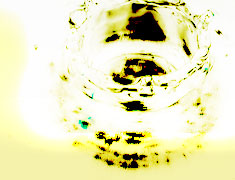Taiwan Provincial Monopoly Bureau
In 1945, after Taiwan’s Retrocession, the National Government sent officials to establish the administrative bureau in Taiwan, which absorbed all wine factories in Taiwan. Puli Business Office wine factory also became part of the Taiwan Provincial Monopoly Bureau, Taichung Branch, Puli Office. The original director, Lee Changtao [Puli Business Office] and official Chiang Hechun [both graduated from Taipei Technical College under the Japanese] were responsible for the turnover. The next year, November 1946, the name was changed to “Wine Corporation, Puli Wine Factory.” In May of 1947, the Taiwan Provincial Government was officially established, and the wine company was merged with the Tobacco and Liquor Bureau, and the government appointed Mr. Huang Chongyan, a graduate of Taipei Technical College, to become the first head of the factory. Puli Office was changed to the Eleventh Wine Factory. Until 1957, the name was changed to include the place name, thus changed to “Puli Brewery.”
The Japanese people who did not immediately leave Taiwan after Japan’s surrender generally sold some things so they could have money for their living expenses. At first, Japanese workers at the Puli Business Office wine factory [manager Riseki Takanori, leader of wine production Saito Hitoshi, office worker Yamada, and wine technicians Michio Hoshino, Okada Atushi, Tsuyoshi Ikegami, Iwagou, Kikuchi Techinan, Kato, 另川幸昭(Japanese name), and others, had good relationships with their Taiwanese colleagues, so their families were taken care of. Later, Taiwanese colleague Chiang Hechun’s father-in-law, Shih Yunchai [a doctor of Chinese medicine in Puli at the time] arranged for them to return to Japan safely. As far as we know, after the Japanese returned to Japan, they used excellent brewing techniques and were hired by local wine sellers to be senior brewers to brew high-class sake for Japan, and were famous both in and outside of Japan.
Various wines were used for cooking, basic consumption, and for use in festivals. Moreover, poorer people tended to use alcohol to numb themselves. Therefore, wine factories would sell lower-grade wines to poor people, and the way these wines were sold was by using large wine cases to sell Dabai Wine (usually referred to as Haito) by the dipperful in bottles by retail (by weight), in markets and streets with more people.
There were three types of drinking habits in Puli: then1. Aborigines and those living in the country generally brewed their own wine from leftover grains that they planted. 2. Generally, coolies drank the low-grade yam, corn, bad rice wines brewed by private wine companies or wine factories after Retrocession. 3. People from prominent families and government officials with stable livelihoods drank pure rice wine and sake to show their status.
|




